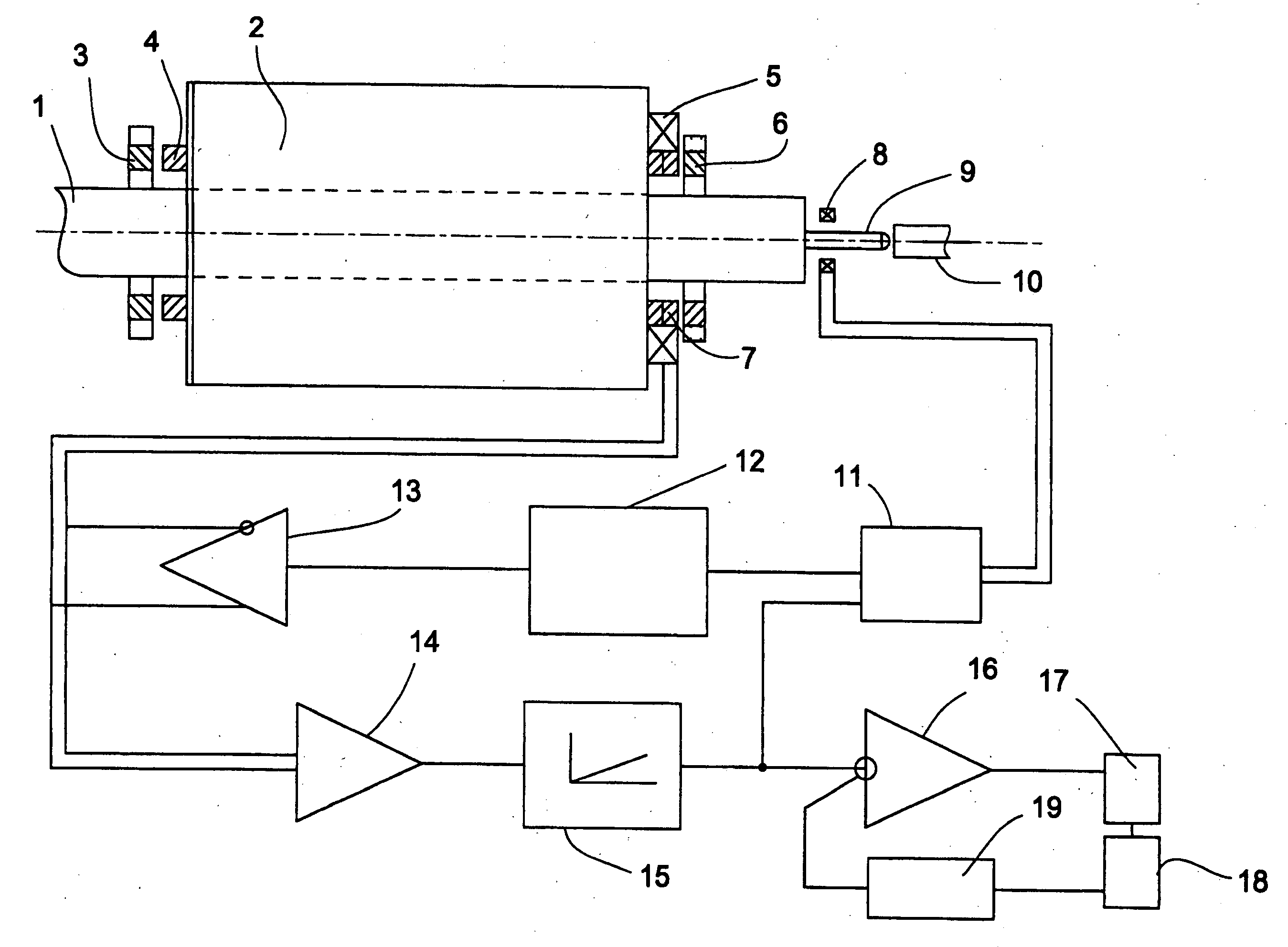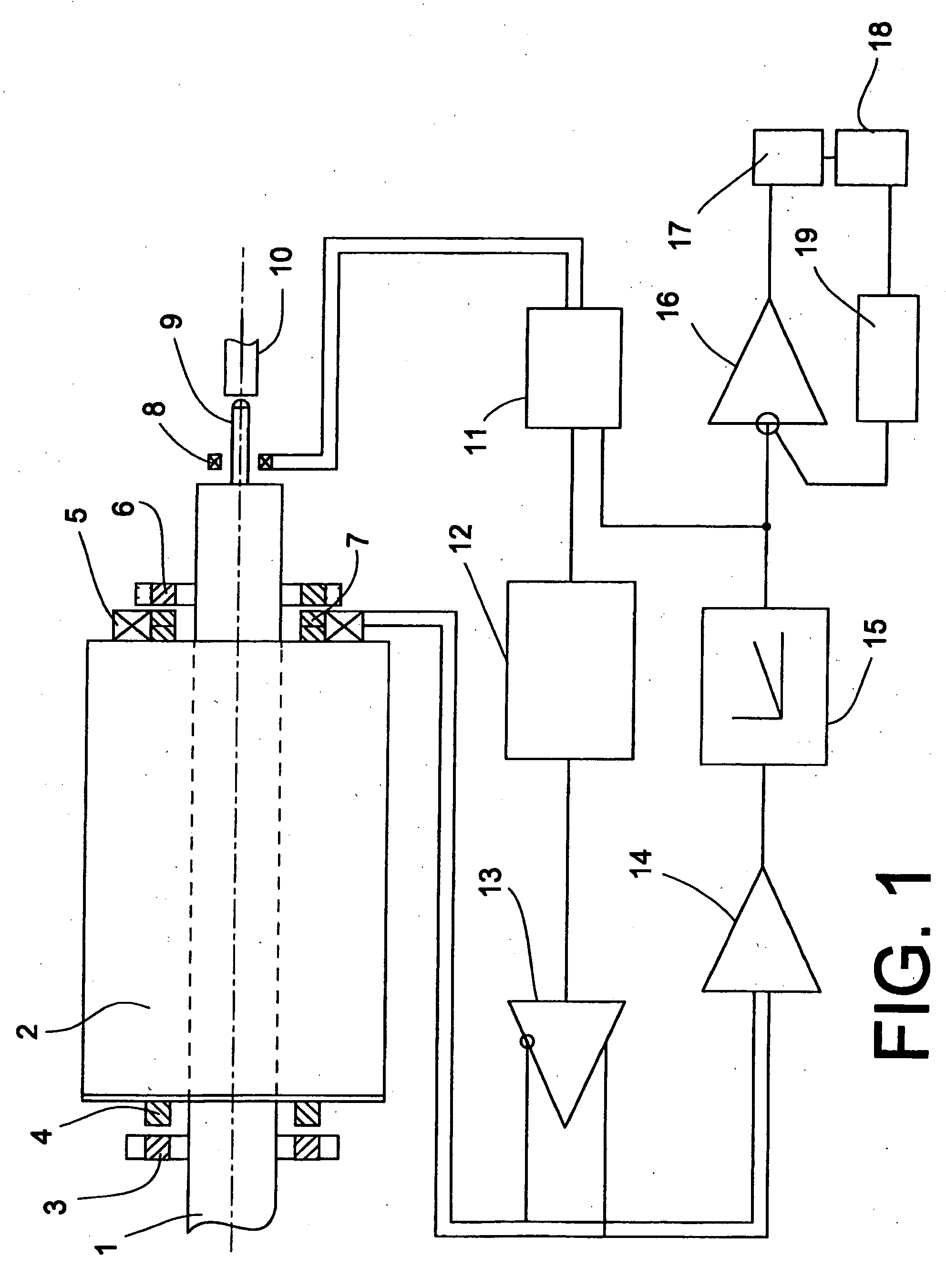Method for Operating an Electromotive Drive
a technology of electromotive drive and drive shaft, which is applied in the direction of relays, open-end spinning machines, mechanical equipment, etc., can solve the problems of mechanical damage to the drive, premature wear of the catch bearing, mechanical damage to the catch bearing and/or the entire inner drive assembly, etc., and achieves simple and economical operation and increased operating safety.
- Summary
- Abstract
- Description
- Claims
- Application Information
AI Technical Summary
Benefits of technology
Problems solved by technology
Method used
Image
Examples
Embodiment Construction
[0027]The view in FIG. 1 shows a bearing arrangement of an electromotive drive, in particular for a textile machine. The electromotive drive may be designed as the individual drive of a spinning mechanism, which is used as the drive for a contactlessly mounted rotor 1. The rotor 1 is designed as the rotor of the electromotive drive and is contactlessly supported in the radial and axial direction in the mounting designed as a magnetic bearing arrangement. The magnetic bearing arrangement inter alia comprises bearing magnets 3, 4, 6, 7, designed as permanent magnets, which axially support the shaft of the rotor 1. To achieve a higher rigidity or damping of the mounting of the rotor 1, further active or passive magnets may be provided. However, the use of a gas bearing in combination with a magnetic bearing arrangement is also possible.
[0028]The electromotive drive also comprises two catch bearings 10 (of which only one is shown in FIG. 1), which are used for the axial support of the r...
PUM
| Property | Measurement | Unit |
|---|---|---|
| speed | aaaaa | aaaaa |
| width | aaaaa | aaaaa |
| electrical energy | aaaaa | aaaaa |
Abstract
Description
Claims
Application Information
 Login to View More
Login to View More - R&D
- Intellectual Property
- Life Sciences
- Materials
- Tech Scout
- Unparalleled Data Quality
- Higher Quality Content
- 60% Fewer Hallucinations
Browse by: Latest US Patents, China's latest patents, Technical Efficacy Thesaurus, Application Domain, Technology Topic, Popular Technical Reports.
© 2025 PatSnap. All rights reserved.Legal|Privacy policy|Modern Slavery Act Transparency Statement|Sitemap|About US| Contact US: help@patsnap.com


